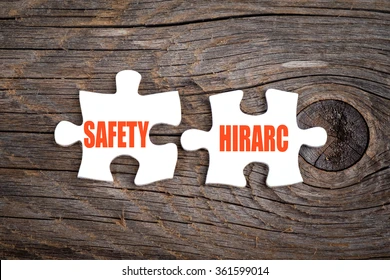Main Training Programs
HAZARD IDENTIFICATION , RISK ASSESSMENT &RISK CONTROL (HIRARC)
INTRODUCTION FOR HAZARD IDENTIFICATION , RISK ASSESSMENT &RISK CONTROL (HIRARC)
Being the most important concept of all Occupational Health & Safety Management System (OHSMS), the Understanding, Evaluation and Implementing Effective Hazard Identification , Risk Assessment &Risk Control (HIRARC) at Workplace Training shape the entire Occupational Health & Safety Management System. A wrong or inadequate the HIRARC will lead to major non-conformity during certification, resources spent without sizeable return and loss of interest from the employees. The HIRARC should be based on the Failure Mode & Effect Analysis and focus on the Severity and Probability of Risk.
Occupational safety & health legislation training is developed for Industries to fulfil the legislative requirement under OSHA 1994 & FMA 1967. By having knowledge on this OSH regulation in Malaysia legal framework will make the employee and employer understand their roles and duty to protect the employee and keep maintained the safe and healthy workplace. This module was developed in a basic understanding in order to give awareness among employees and employer, particularly those who deal with OSH issues, eg. Internal OHSMS Auditor. This program will allow them in conducting also HIRARC activities in a more efficient way.
COURSE OBJECTIVES
- To identify environmental, occupational safety and health laws, regulations and other requirements
- To introduce the regulatory framework of Malaysia (OSHA 1994, FMA 1967 and others) and the influence of other international treaties on the direction of Malaysian legislation
- To understand the definition of Occupational Hazard Risk
- To understand and implement the method of HIRARC
- To understand the consideration of factors in deciding tolerable & intolerable risk
WHO SHOULD ATTEND
- Company Internal Auditor, SHE Committee and SHE representative or any employees who are responsible for the HSE practice at workplace and continuous implementation of an environmentally safe and sound of work environment through their daily operation.
METHODOLOGY
- Informative lectures reinforced by PowerPoint presentation, videos and group discussion
NUMBER OF PARTICIPANTS
- Maximum 25 pax
DURATION
- 2 days (9.00 am – 5.00 pm) – on 16 XX 201XX
COURSE CONTENT
Programme Schedule (Day 1)
| Time | Subject |
| 0900-0930 | Introduction to Occupational Safety and Health Laws in Malaysia and relevancy OSHMS
Introduction to HIRARC Program |
| 0930-0955 | Chemical Hazard
|
| 0955-1045 | Physical Hazard
|
| 1045-1100 | BREAK |
| 1100-1145 | Biological hazard
|
| 1145-1230 | Psychosocial hazard
|
| 1230-1330 | LUNCH |
| 1330-1445 | Hazard Identification
|
| 1445-1515 | Hazard Identification
|
| 1515-1530 | BREAK |
| 1530-1630 | Hazard Identification
|
| 1630-1700 | Presentation & Evaluation
END |
Programme Schedule (Day 2)
| Time | Subject |
| 0900-0930 | Introduction to DOSH HIRARC Guideline |
| 0930-0955 | Process of HIRARC : Risk Assessment
Risk can be calculated using the following formula: L x S = Relative Risk L = Likelihood S = Severity |
| 0955-1045 | HIRARC : Documenting Process
Risk Assessment
|
| 1045-1100 | BREAK |
| 1100-1145 | HIRARC : Documenting Process
Risk Assessment
|
| 1145-1230 | Risk Control
|
| 1230-1330 | LUNCH |
| 1330-1445 | Risk Control – Engineering
|
Risk Control – Administrative Control
|
|
| 1515-1530 | BREAK |
| 1530-1630 | Risk Control- PPE
|
| 1630-1700 | Presentation & Evaluation
END |

